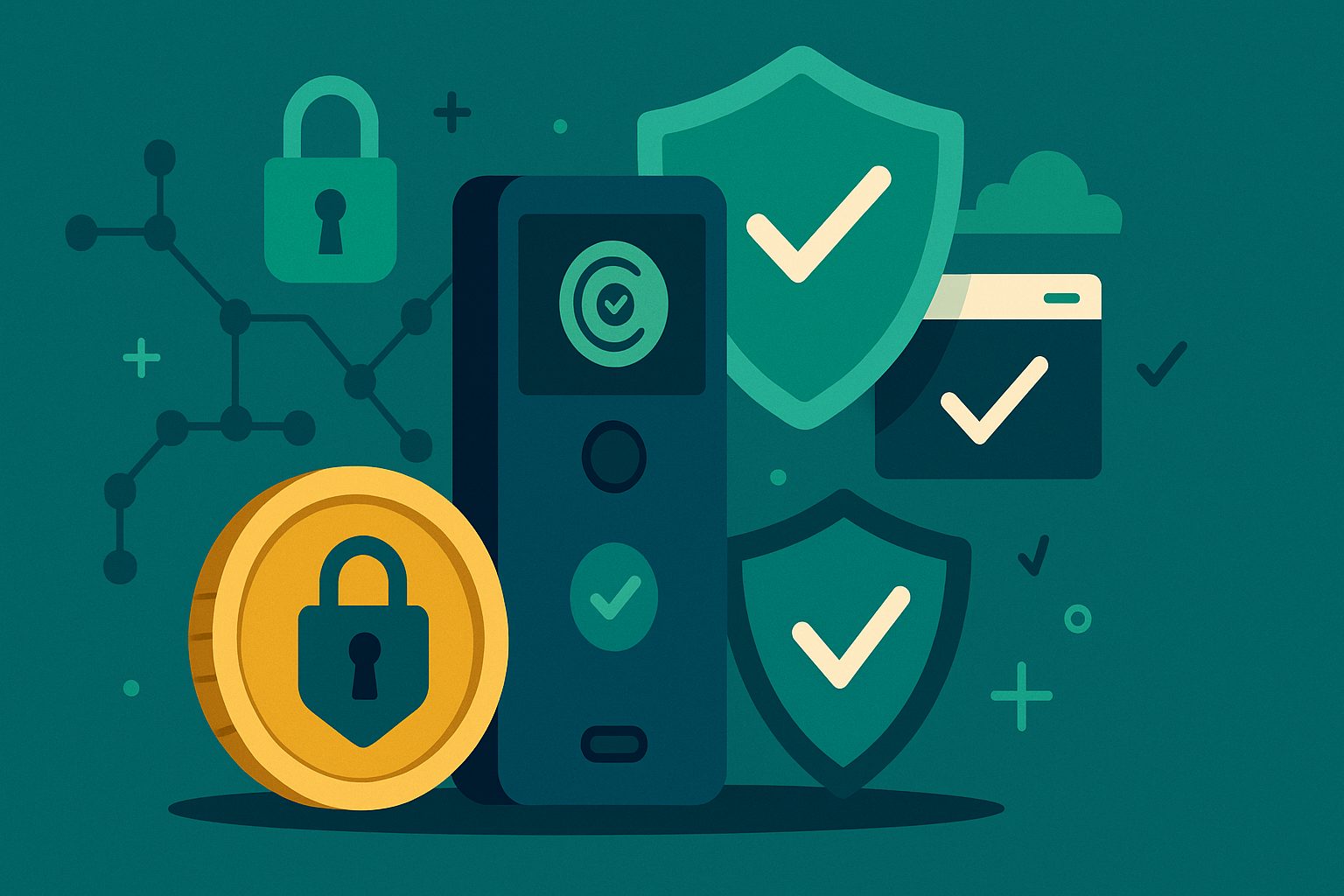The Importance of Hardware Wallet Security
In the fast-paced realm of blockchain crowdfunding, where both opportunity and risk abound, safeguarding your investments is paramount. Hardware wallets stand out as the gold standard for storing private keys offline, insulated from malware, phishing attacks, and exchange hacks. Yet, a hardware wallet is only as secure as the practices surrounding its setup, usage, and storage. This article guides you through every nuance—from selecting the optimal device to implementing rigorous recovery measures—ensuring that your crowdfunding tokens remain firmly under your control, no matter how turbulent the market grows.
Picking Your Protector: Selecting the Ideal Hardware Wallet
Not all hardware wallets are created equal. When weighing options, consider factors such as open-source firmware, secure element chips, and reputable manufacturer track records. Devices that allow you to verify firmware authenticity through cryptographic signatures provide an extra layer of trust. Look for wallets that support multi-currency holdings if your crowdfunding investments span multiple blockchains. Ergonomic design and user-friendly interfaces may seem minor, but in moments of critical transactions—such as claiming a hot sale token—they can significantly reduce the risk of user error. By choosing a wallet that balances security, transparency, and usability, you lay a sturdy foundation for all your crowdfunding endeavors.
The Safe Emerges: Unboxing and Initial Setup with Vigilance
Your hardware wallet’s first moments out of the box deserve special care. Always purchase directly from the manufacturer or an authorized distributor to avoid tampered devices. Inspect packaging for any signs of resealing or physical damage. During initial setup, power the device on in a private, malware-free environment—your home or a trusted office setup. Follow the manufacturer’s on-screen prompts to generate a new seed phrase; never import an existing phrase or private key. This fresh generation process guarantees that no third party ever had access to your keys. As you walk through the setup wizard, resist any on-screen offers to skip security steps or share data. Your vigilance here determines the long-term integrity of your wallet.
Guarding the Golden Twelve: Crafting Impeccable Seed Phrase Practices
The twelve or twenty-four words you record during setup form the ultimate backup of your wallet. Treat them with the utmost secrecy and permanence. Transcribe each word neatly on at least two separate seed phrase cards—preferably made of metal or another fire-resistant material. Avoid writing them on paper, which can degrade or burn. Store these cards in distinct, secure locations: one in a home safe and another in a safety deposit box or a trusted family member’s possession. Never digitize the phrase or take photos; digital files are vulnerable to hackers. By embedding redundancy and physical resilience into your backup strategy, you safeguard against environmental hazards, theft, and accidental loss.
Firmware Armor: Keeping Your Device Up to Date and Tamper-Free
Hardware wallet security evolves through firmware updates that patch vulnerabilities and enhance features. Yet indiscriminate updates can also open you up to malicious code if performed carelessly. Always download updates from the manufacturer’s official website and verify checksums or cryptographic signatures before applying. Perform updates over a secure, private internet connection—never on public Wi-Fi or shared networks. After each update, confirm the device’s authenticity by checking its unique serial number or built-in verification screen. Regular firmware maintenance ensures you benefit from the latest protections, while authentication steps prevent firmware-level hacks that could expose your private keys.
Physical Fortification: Optimal Storage for Maximum Protection
A hardware wallet’s resilience extends beyond its circuitry to how it’s physically stored. Consider investing in a secure, portable safe with tamper-evident seals. Stashing your device in a discreet location protects it from opportunistic thieves and unauthorized family members alike. If you travel frequently, use a tamper-resistant travel case and never leave the device unattended in hotel rooms or coworking spaces. For those with multiple high-value wallets, distributing devices across separate locations reduces single-point-of-failure risk. By treating your hardware wallet as you would a high-value heirloom—protected, monitored, and stored with intention—you maintain control even in unpredictable circumstances.
Transaction Discipline: Executing Crowdfunding Claims Securely
When it’s time to pledge or claim tokens during a crowdfunding sale, the adrenaline can tempt shortcuts. Resist any impulse to bypass the wallet’s confirmation screens. Always verify the recipient address on the device’s built-in display rather than on your computer screen, which could be hijacked by malware. Review transaction details—amount, network fees, and contract addresses—meticulously before approving. If the sale uses a bespoke smart contract, cross-reference the contract address on multiple reputable sources before proceeding. Confirm that you’re operating on the correct blockchain network. This disciplined approach to every signature and confirmation keeps your tokens out of malicious hands and ensures that your participation in the sale goes exactly as planned.
Layered Authentication: Combining PINs, Passphrases, and Multisig
Hardware wallets typically protect access with a PIN code, but you can further harden security by enabling an optional passphrase feature. This “twenty-fifth word” transforms your seed phrase into a family of hidden wallets, each unlocked by a different passphrase. Even if an attacker steals your device and brute-forces the PIN, they cannot access funds without the passphrase. For maximum security, deploy a multisignature scheme across several hardware wallets: any transaction must be approved by a quorum of devices. While more complex, multisig setups distribute risk and prevent single-device compromise from draining your funds. By leveraging these layered authentication methods, you elevate your defense posture far beyond basic PIN protection.
Recovery Rehearsal: Testing Your Contingency Plan
A well-stored seed phrase is only useful if you can successfully restore your wallet under pressure. Schedule a recovery rehearsal on a secondary device at regular intervals. Use the backup cards to regenerate your wallet and verify access to the correct addresses and balances. Practice this process until it becomes second nature. Involve your trusted backers or a collaborator in the exercise—without revealing the actual seed phrase—to validate that your documented procedures and location instructions are clear. By proactively rehearsing recovery, you eliminate uncertainty and ensure that, in the event of device loss or destruction, your crowdfunding investments remain fully accessible.
Integrating with Crowdfunding Platforms: Seamless and Secure Connections
Many token sales require you to connect your hardware wallet to web-based platforms using tools like WalletConnect or native extension support. Before initiating any connection, inspect the URL to confirm you’re on the official sale portal. Use a hardware wallet interface—such as MetaMask’s hardware integration or the wallet’s dedicated desktop app—to manage transactions, never an untrusted third-party tool. Once connected, review the requested permissions, limiting approval to only the necessary actions (e.g., signing a purchase transaction rather than granting unlimited token allowances). After each session, disconnect your wallet and clear any remembered connections. This disciplined handshake with crowdfunding sites prevents credential leakage and confines interactions to secure channels.
Vigilance Over Time: Ongoing Best Practices and Regular Reviews
Securing your hardware wallet is not a one-time event but an ongoing commitment. Periodically review your seed phrase storage, verify firmware versions, and check for any deprecated security features. Stay informed about newly discovered vulnerabilities by subscribing to manufacturer alerts and reputable crypto security blogs. If you notice unusual network activity—such as unexpected delegation changes or outgoing transactions—investigate immediately while keeping your device offline until resolved. Regularly revisit your multisig configurations and passphrase policies to confirm they still align with your risk tolerance and operational needs. Through continuous vigilance and incremental improvements, you maintain a dynamic security stance that adapts to emerging threats.
Educating Your Team and Community: Multiplying Protection Efforts
If you’re running a crowdfunding campaign with a team, ensure every member grasps hardware wallet security fundamentals. Host workshops on seed phrase handling, transaction verification, and firmware updates. Draft a clear standard operating procedure (SOP) document that outlines roles, responsibilities, and emergency contact protocols. Encourage open communication about potential threats or unusual observations, fostering a culture where security is everyone’s priority. When contributors or community members ask for guidance, provide them with distilled best-practice summaries and reputable educational resources. By broadening security awareness beyond just yourself, you create a collective shield that reinforces every hardware wallet in your ecosystem.
Preparing for the Unknown: Scenario Planning and Insurance
In the unpredictable sphere of crowdfunding investments, consider preparing for worst-case scenarios. Acquire specialized crypto insurance policies that cover hardware wallet theft, loss, or even certain types of smart contract exploits. Consult with legal and insurance professionals to understand policy terms, exclusions, and claim processes. Maintain an incident response playbook that outlines immediate steps—such as revoking allowances or moving funds to a new wallet—in the event of a suspected breach. By coupling robust prevention with structured response plans, you position your crowdfunding investments to weather incidents without spiraling into unmanageable losses.
The Road Ahead: Embracing Next-Generation Hardware Security
Looking forward, hardware wallet innovation continues at a rapid clip. Emerging devices integrate biometric authentication, secure enclaves with advanced cryptographic algorithms, and seamless multisig setups out of the box. Some wallets are experimenting with decentralized key‐sharding, distributing seed fragments across trusted nodes rather than centralized storage. Keep an eye on open-source developments and participate in beta programs to evaluate cutting-edge solutions before mainstream release. Early adoption of next-generation hardware features can yield both security and usability dividends, reinforcing your crowdfunding strategy with state-of-the-art defenses.
Cementing Confidence in Your Crowdfunding Journey
In the exhilarating world of token crowdfunding, where swift decisions meet high stakes, hardware wallet security forms the bedrock of sustainable success. By carefully selecting a trusted device, orchestrating meticulous setup and storage practices, and layering authentication safeguards, you neutralize threats that can dismantle even the most promising campaigns. Regular firmware maintenance, recovery rehearsals, and community education keep your defenses sharp, while scenario planning and emerging technologies future-proof your approach. With these comprehensive measures in place, you and your backers can navigate crowdfunding launches with confidence, knowing that every token you acquire rests behind an impregnable digital fortress.




